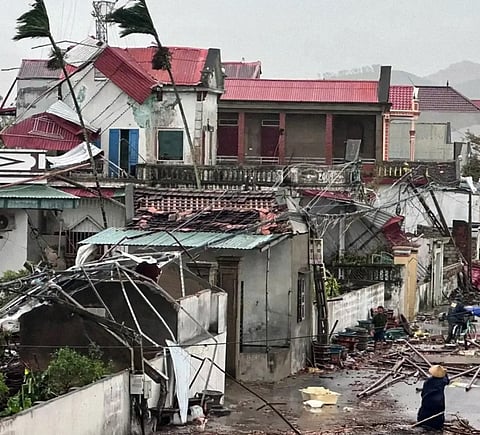
- Destinations
- Experiences
- Stay
- What's new
- Celebrating People
- Responsible Tourism
- CampaignsCampaigns
- Subscribe
- Buy Now

Vietnam is reeling from the impact of Typhoon Bualoi, now the most devastating storm to strike the country this year. The government confirmed on Tuesday that the death toll had risen to 19, with 21 people still missing, as heavy rains triggered widespread flooding in Hanoi and several northern provinces.
The storm’s destruction has also been felt across neighbouring countries, with Bualoi having already caused at least 10 deaths and severe flooding in the Philippines just days earlier.
In preparation for the storm’s arrival, Vietnamese authorities suspended operations at four coastal airports on Monday — including Da Nang International Airport — and rescheduled multiple flights. Thousands of residents in high-risk areas were evacuated, and schools across the typhoon’s projected path were closed, with closures expected to continue if conditions worsen.
Bualoi made landfall along Vietnam’s central coast early Monday, bringing powerful winds of up to 133 kilometres per hour and torrential rains that flattened homes, snapped power lines, and submerged roads. Coastal areas were battered by waves reaching 8 metres (26 feet), according to the national weather agency.
Despite widespread precautions, Typhoon Bualoi left a trail of devastation as it swept inland, unleashing violent winds and intense flooding before weakening into a tropical depression en route to Laos. The storm destroyed temporary bridges and flooded roads and low-water crossings across multiple provinces, leaving many highland communities isolated. In urban areas, rising floodwaters submerged vehicles and caused widespread disruption. Powerful winds also caused the collapse of houses in Hue City, Thanh Hoa, and Ninh Binh province, adding to the devastation. As search and rescue teams press on, Vietnam and its neighbours are now grappling with the aftermath — a recovery process expected to be long and challenging.
The storm has reignited concerns over the growing frequency and severity of extreme weather events across Southeast Asia. Vietnam’s National Weather Forecast Agency described Bualoi as an unusually fast-moving and powerful system, travelling at nearly twice the typical speed of storms in the region. With its broad area of impact, the typhoon was capable of triggering multiple hazards at once — from destructive winds and torrential rain to widespread flooding, landslides, flash floods, and coastal inundation.
As of late September 2025, Vietnam has been significantly impacted by three typhoons: Wipha, Kajiki, and Bualoi. The country experiences four to six typhoons on average each year, with the season typically running until the end of November.
Due to the recent impact of Typhoon Bualoi, travellers are advised to exercise increased caution, especially in affected regions. Significant disruptions and safety risks remain in many parts of the country.
Avoid Affected Areas
Postpone travel to storm-hit regions — including northern, north-central, and central Vietnam — where flooding, infrastructure damage, and ongoing rescue efforts are underway.
Monitor Weather And Official Updates
Check local weather forecasts and government advisories daily, as conditions may change rapidly.
Stick to Main Routes
Use primary roads and highways. Avoid rural or secondary roads until they are officially cleared and deemed safe.
Expect Travel Disruptions
Be prepared for delays or cancellations to flights, buses, and ferries. Remain flexible with travel plans.
Use Official Transport Only
Do not attempt to travel through flooded areas. Use only licensed, official transportation providers.
Carry Emergency Essentials
Keep basic supplies on hand: bottled water, non-perishable food, torch/flashlight, first aid kit, power banks, and necessary medications.
Register with Your Embassy
If possible, register your travel with your country’s embassy and maintain regular contact with family or friends at home.
What areas in Vietnam were most affected by Typhoon Bualoi?
Typhoon Bualoi primarily impacted central and northern provinces of Vietnam, including Ha Tinh, Nghe An, Hue City, Thanh Hoa, and Ninh Binh.
How strong were the winds during Typhoon Bualoi?
The typhoon brought winds reaching up to 133 kilometres per hour before weakening into a tropical depression as it moved inland.
Were there any evacuations or airport closures due to the typhoon?
Yes, thousands of residents were evacuated from high-risk zones, and operations at four coastal airports, including Da Nang International Airport, were suspended.
What kinds of damage did Typhoon Bualoi cause?
The storm caused widespread flooding, destroyed homes, snapped power lines, submerged roads, and triggered landslides across affected regions.
What is the expected recovery process following Typhoon Bualoi?
Vietnam and its neighbours face a long and challenging recovery, involving search and rescue efforts, infrastructure repair, and addressing the risks posed by increasing climate-driven extreme weather events.
